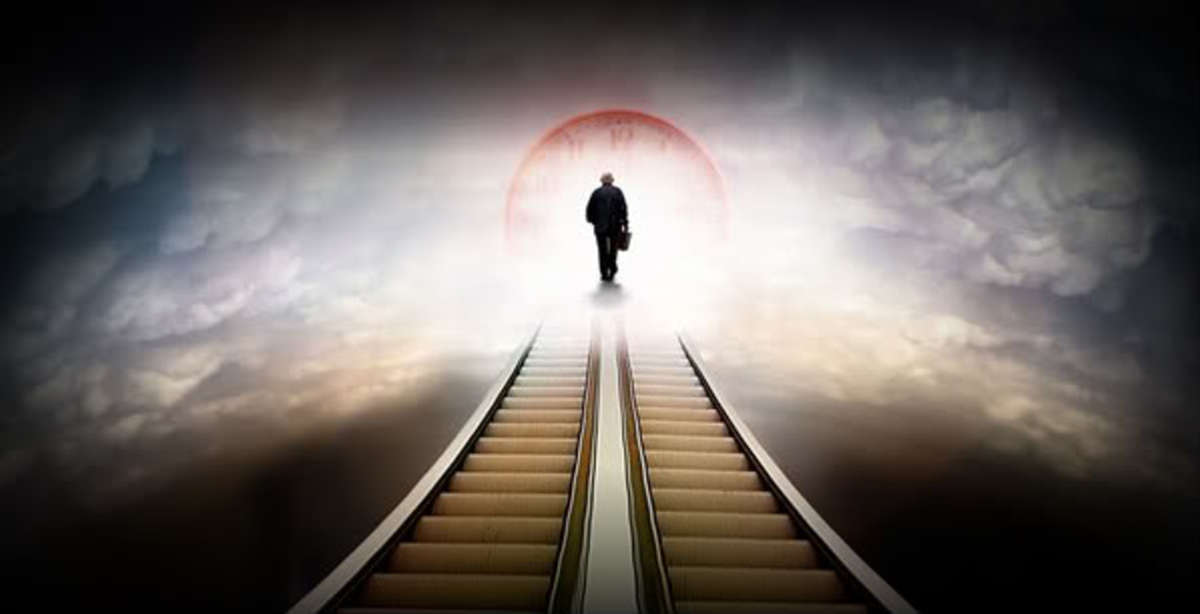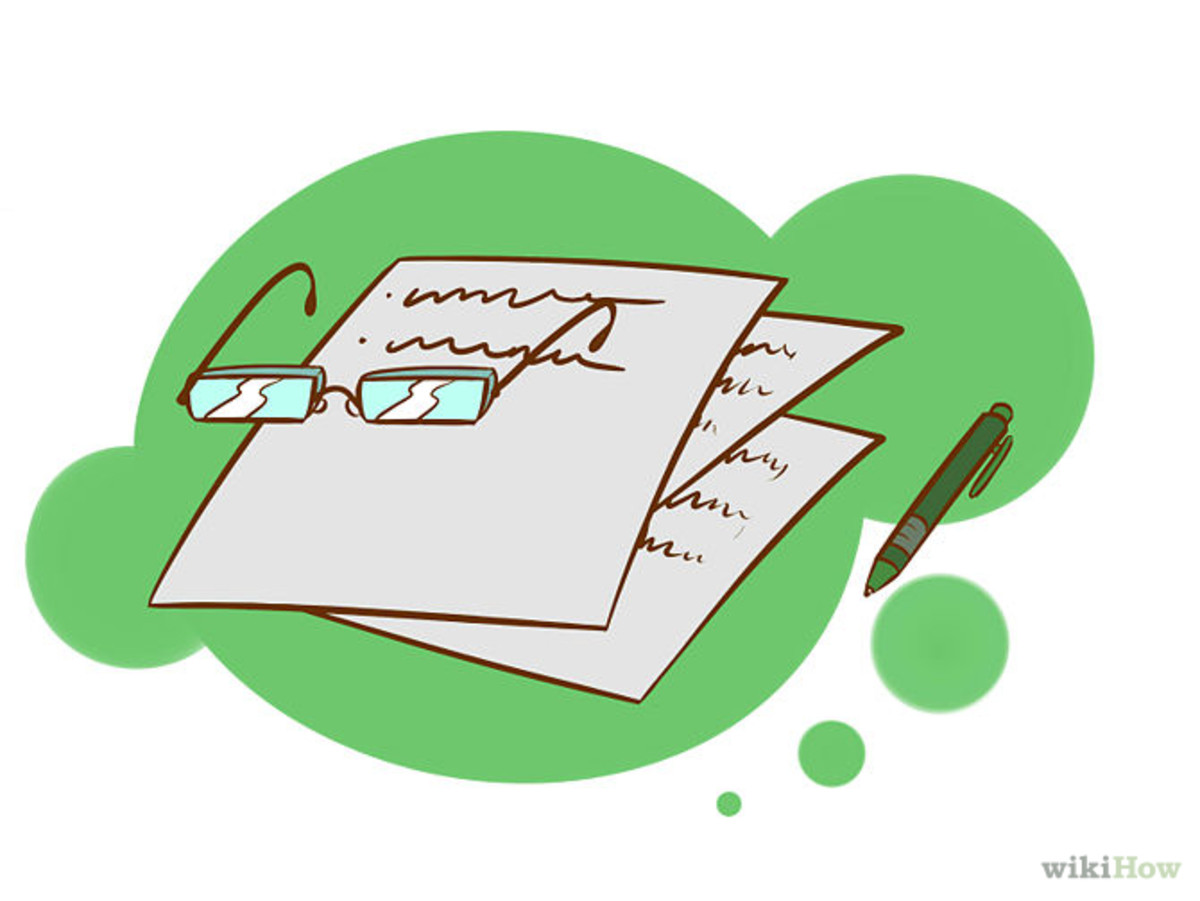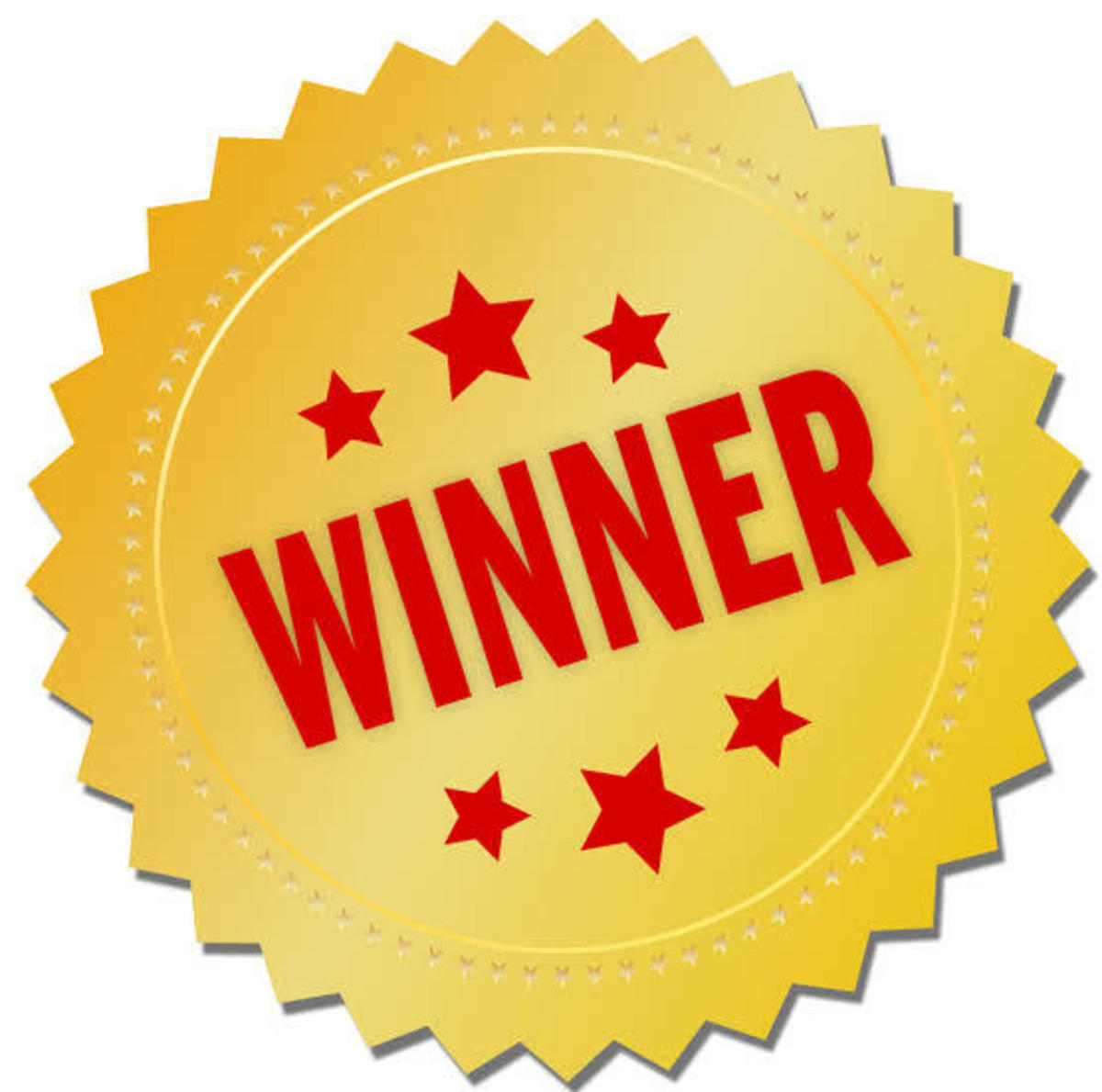5 Tips for Overcoming Procrastination: Get to Work & Be Creative
Getting Unstuck
We all feel stuck sometimes. We want to work but don't feel like it or just can't. We need to be creative but the juices are just not flowing. Here's what to do.
This article was inspired by a question from Midget38: What Do You Do When You Feel Stuck in a Rut?
It was also inspired by the fact that, as I started to write this, I was stuck in a rut. I'd been procrastinating on writing a hub - any hub- for three weeks. So, walk with my while I face my writer's block and get unstuck. We'll get out of this together!
How Big a Hole Are You Digging Yourself Out Of?
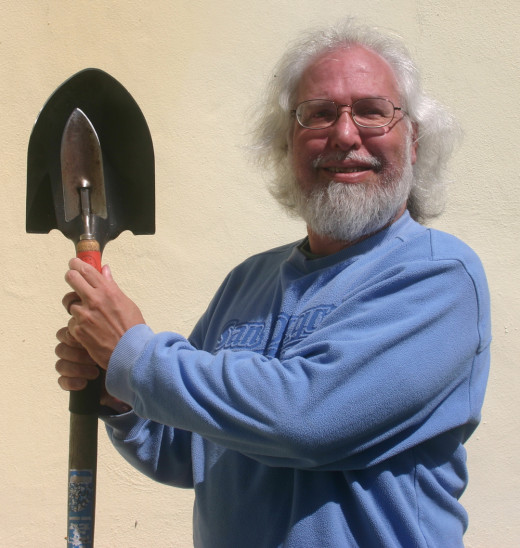
How Stuck Am I?
We all get stuck sometimes. We want to work, but we can't. We have a deadline to meet, and we just aren't going to pull it off. We're just getting more tense and more useless. What do we do?
The question, "How stuck am I?" is a great place to start. There are little stucks that can be fixed with a power-walk, and big creative blocks that can go on for months.
Fixing a big stuck with a small fix is like trying to move a boulder with a shovel. It just won't work.
If you need to dig a small hole, use a trowel. A big hole, use a shovel. A really big hole, get a backhoe!
It's the same when we have to climb out of a hole, when we are stuck. Be honest about the size of the hole you are in, then choose from these five tips to get out of the hole!
Here they are: 5 ways of getting unstuck, from smallest to biggest.
- Get Moving!
- Talk to Yourself!
- Relax!
- Take a Break!
- Get Creative!
Tip #1: I Get Moving
The Remedy Is: Get Yourself Moving; Shake Yourself Out; Take a Power Walk
The connection between physical motion and the flow of progress is just amazing. A quick power walk, especially with arms swinging, gets the blood flowing and the brain in gear. I try to do this daily, and I'll do it more often to get the work flowing.
When I work in an office and someone says, "Sid, I need to talk to you!" I say, "Let's walk." We go for a power walk around the building, solve the problem, and get to work on it. Works every time.
Why This Works
First, blood flow and oxygen are everything. The brain uses 25% of available oxygen. We get walking or arm-swinging, and we breathe more deeply and our blood gets more oxygen in it. Then we sit down and the blood flows into the brain. More brain cells clicking, more work done.
Second - and this is especially good if we're doing boring jobs - we get tense sitting there paying bills or answering emails. With tension, we freeze up. Once we shake ourselves out, we're read to move again.
Third, there's a felt connection between moving and getting things done. No one ever won a marathon sitting down (except wheelchair marathoners like these, and they're real heroes). Getting up and getting moving physically gets us moving towards our goals.
How to Do It
Just get moving, outdoors if you can, or indoors is okay. Music can be a big help. If you can't walk, dance!
How much movement do we need? It varies. Sometimes, I can shake myself loose in 30 seconds. On a really bad day, I need half an hour. My friend Steve Joseph needed to take a run every day at lunch time, but he also managed to change his whole life. You can check out his success story here.
Tip #2: I Talk Myself Into Working
The Remedy is: Talk to Yourself out Loud, or Write out Your Problems
Why This Works
Here's a fun one! You know how scientific opinion about everything changes? Margarine was supposed to be healthier than butter, now its the other way around. Eggs were bad because of high cholesterol, now eggs have good cholesterol.
Well, when I was growing up (alongside the dinosaurs), talking to yourself meant that you were crazy. Except a few crazy hippie guys thought, "Don't get a therapist, just talk to yourself." Now, the latest psychological theory says that talking to yourself is a sign of Emotional Intelligence and is part of anger management. We can actually talk ourselves out of being stuck, frustrated, or angry. And we can talk ourselves into doing effective work, and even having fun doing it!
It all has to do with this crazy brain we have. You see, when we just worry inside our heads, all that thinking is in the left side of the brain, the source of anxiety and depression. When we talk out loud, the words go out our mouth and into both ears. Then the right brain, the source of experience, emotion, motivation, and action clicks into gear.
When the right brain and left brain get into gear, the gears start meshing, and we get really productive.
In fact, it's happening to me right now. I just complained to a friend that I felt this hub was boring, I came back, and I'm writing three times faster and making it more fun. And then it just happened again. I've come back to revise this hub and finish it up. Today, I started out in a really low mood. But I got myself moving and I got myself working. For the first hour, I got stuff done and felt miserable. Now, I'm starting to enjoy the work, and I'm also getting back into the flow of creative writing. I'm balancing my brain, and I feel better!
How To Do It
There are several ways to get ourselves moving when we're stuck.
The Power of Negative Thinking
The most fun way to do this is from Barbara Sher's book WishCraft. It's called, "The Power of Negative Thinking." We get a friend, or more than one, for an audience. We stand up and to a stand-up comedy routine, out loud, about everything we don't like about what we're doing. Make it silly. Make it extreme. Get your friend laughing.
Then get to work.
The Morning Pages Journal and Blasting Through Blocks
Or, from Julia Cameron in The Artists Way, we do it with a daily journal she calls "Morning Pages." And if morning pages don't work, we use "Blasting Through Blocks." This one involves asking and answering three questions in writing. We think about the job in front of us and ask: "What am I anxious about or afraid of?" and write down the answer. We ask ourselves: "What am I resentful or angry about?" and write down the answer. We ask: "Is there anything else?"
After we dump all that out, we get to work.
Putting It All Together
These techniques work. How do I know? Because I use them all the time. I write morning pages every day. I'm doing my power walks daily now, too. And I use the others whenever I need to. And I've written 10 books and over 100 articles in the last nine years.
And they work together, too. I do really well by talking aloud to myself and complaining about life on a power walk. Then I walk back inside, sit down at my computer, and get to work.
In fact, I did that just before I wrote this section of the article.
And it worked. I may have taken a long lunch. But I wrote this whole section at over 50 words a minute. The dam has burst.
Where did I learn to do this? Those crazy hippies. You see, when we threw out the therapist and just talked to ourselves, we went for a walk and talked out loud. It's worked for me for 30 years!
Tip #3: I Relax
The Remedy is: Relax and Take Good Care of Yourself!
If you've tried steps one and two and you still can't get to work - or the creative juices are just not flowing - then you may be in a little hole, but you might be into something bigger. Getting moving (tip #1) and talking to myself (tip #2) work when I've got too much energy and my focus on my goal is blocked. But if they don't work, then I may have more than too much energy, I may be too tense.
So I take care of that, first. I release the tension.
If releasing the tension doesn't work, then I'm probably facing a medium-sized hole, not just a small, daily hole. I've gotten myself worn out and tired, and I need some time to recover. I've fallen into a medium-deep hole and I'm going to have to climb out of it.
What's going on? I may just be very, very tense. Then I need to relax. But more likely, I'm tense, I'm tired, and I'm eating poorly.
In that case - duh! - I need to relax, rest, and nourish myself.
Why Relaxation Works
Like it or not, body and mind are connected, not separate. When we are tense, higher brain functions are more limited. (That is why people who are on steroids are literally, more stupid and violent than they would be without them.) When we are exhausted, we can't think straight. And exhaustion is an epidemic in America right now.
How Do You Relax?
Oops! Here's where I can't help you as much as I'd like. I've spent 35 years trying to figure out how to relax, and I'm just getting a handle on it. There are many approaches, but we're all different. What works for me may not work for you. We have to try out all of them and get to know them well before we know which one will work for you or for me. Or, as those hippie teacher of mine (and the ancient Greek philosopher Socrates) would say, "Know yourself." I don't mean this in some abstract philosophical way. I mean: Know what works for you, and know what doesn't.
Then do what works, and don't do what doesn't!
Relaxation Techniques: Several Things to Try
Relaxation can be physical or emotional. And there are many ways to get there.
Physical Relaxation
Let's start with relaxing the body. There are so many ways.
- Tire yourself out. We start with physical exercise. Push the power walk (or run) to it's limit. It may sound odd, but exercising to the max triggers physical relaxation.
- Tension and release. We can first tense the body, then relax it afterwards. A yoga session beginning with standing poses or balance poses and ending with savasana (lying down relaxation) can do this. Or we can do isometrics - simple tension release exercises. It really helps to build the tension as we breathe in and release it as we breathe out.
- Swimming. Swimming combines the work of exercise with the relaxation of being in the water.
Relax the Feelings with Nature and Art
We were evolved to live in a natural world. Our eyes see in daylight and in moonlight - precisely adapted to natural conditions. And so there is a state, some call it The Zone, we can enter into when we let go of ourselves and fall into natural beauty. Great art - not intellectual art designed to stimulate thinking, but beautiful art designed to nourish the soul - also brings us into this state of harmony. Creating spaces like that is what Zen gardens are all about.
Relax With Familiar Comforts
Things that bring up pleasant memories also help us relax. This is one benefit of childlike comfort foods, such as chocolate and peanut butter. But we have to be careful, especially if we were raised on junk food. (I know I was!) We must choose foods that are physiologically relaxing: a healthy sugar balance, and nothing we are allergic or sensitive to.
These comforts are not just foods. Gazing at a fire in the fireplace or curling up with a favorite blanket and book are also good. (Don't tell anyone, but it's even okay to cuddle stuffed animals!)
Again, it's important to be careful. A friend of mine is a bookaholic. That's like being an alcoholic, only reading, instead of drinking. A few weeks ago, she thought to take a relaxing break by reading a story by a favorite author, George MacDonald. It's really inspiring stuff. That sounds like a good choice. Only she ended up reading The Complete Works of George MacDonald (about 50 novels and stories) and ended up further behind than ever. We can laugh about it now, but it did create a real mess. So be careful about those breaks - don't forget to go back to work!
We use physical exercise, tension and relaxation, time in nature or with art or comfort to relax,'s that is, to trigger the relaxation response.
The Relaxation Response
The Relaxation Response is a term coined by Dr. Herbert Benson, a medical doctor at Harvard, who researched the effects of relaxed breathing on the body. Within 20 breaths, a person using this technique can make a basic shift in the nervous system that we all know as relaxation. And, when we do, our immune system gets stronger.
But we want to do more than just relax and feel better and then sit around and do nothing. We want to relax and get to work. So the key is to bring up the tension, then relax, then get to work.
On a good day, we'll only have to do that ones. But good days are few and far between. Rather, life is full of sources of tension: Deadlines, creative challenges, and endless piles of dull, practical work.
So we have to keep at it. We don't just relax and get to work once a day. We may need to do it five times, or ten, or, on a bad day twenty.
It doesn't matter how often we do it. We do it, and then we get back to work. You've probably heard the saying, "It doesn't matter how many times you fall down; what matters is that you get back up." So let's face our tension, let go, relax, and then get rolling - again and again and again.
Wobbling on Our Way
That could sound pretty miserable. But it isn't. It's a lot like starting to ride a bicycle. During the first few pushes, the wheels are turning slowly, and the bike wobbles with every push of a pedal. But push a few more times, and the wheels are spinning fast. Now we're going somewhere! And with the momentum and stability of a spinning wheel, we're steady. Suddenly, we're not struggling any more: We're in the flow.
By the way, remember that I said I started this hub stuck. Well, this was my exact experience. The first few sentences were hard. I took a short break. Then two sections flowed really easily.
Then I had to take a break to do some other work. After that, I got going on finishing this section. And I felt wobbly for the first ten minutes. Then once I got the idea to write about the Relaxation Response, it all just flowed out of me.
Now, I'm in the flow; I'm in the Zone.
And I come back another day to revise this hub and make it better. I start out a bit slow and wobbly - after all, it's Friday. But I keep reading, tweaking, thinking, writing, and here I am: In the flow again!
Tip #4: I Take a Break
The Remedy Is: Take a Bigger Break if You Need It
Let's review what we've learned:
- The trowel for digging yourself out of a small hole: Get moving, relax, and get to work.
- The shovel for digging yourself out of a medium-sized hole: Relax deeply, take a break and get comfortable, then get rolling. You'll be wobbly at first, but stay with it, soon, you'll be in the flow.
And if neither one works? Well, if the trowel and the shovel don't work, bring on the backhoe!
Digging calls for digging tools. Getting back to work requires getting-back-to-work tools. With digging tools, the bigger the hole, the bigger and more powerful the tool. But the tool does basically the same thing: It digs. It's just the same with getting-back-to-work tools. The bigger tools are just like the little ones, but bigger and more powerful. They work the same way. Relax, take a break, and get back to work - big time!
So, if I just can't work, I admit it. I don't sit around chewing pencils or playing computer solitaire. (Admit it! We've all done it!) Instead, I'm learning to do better. I take a bigger break in one of two ways: The Artist Date or the Mental Health Day.
The Artists Date
This is another idea from Julia Cameron's great book, The Artists Way. She suggests that we get in touch with, and nourish, the fun side of ourselves, which she calls our "inner artist child." We plan ahead, feeling what would be really good. We carve out enough time, just as we would if we were a divorced Mom or Dad who could only see our little boy or girl one day a week. And we make sure it's a special time. A half-day is great. But if that's not possible, aim for two or three hours.
I've found three things that work for me. The first was hanging out at an all-you-can-eat restaurant with a book. Good for every part of me except my waistline. But it got me going. Now that I really want to lose some weight and feel better, I've dropped that one. But I've got two more. I spend time at the beach. And I go to see creative, off-beat movies.
But those aren't all. There are museums and parks and half-days reading a novel. I'm always open to new experiences, or familiar, comforting ones. Both of those are part of a healthy, creative, productive life.
So, take some time to listen to yourself. What would be really fun? Make a list of at least five items. Be willing to think outside the box. One of my best was climbing a lighthouse. Maybe you want to try flying in a balloon. Just make your list of five, then pick one. Whatever it is - a best-seller or a balloon - go do it!
The Mental Health Day
In the United States, what we used to call "sick days" have taken an interesting turn: You don't have to be sick to take a sick day. There are various terms. "Mental Health Days" is one. Basically, it says, "you get a certain number of days off each year. You may be sick, but you don't have to bring a doctor's note. So people with less physical illness can take a "mental health day."
Another term is a "Floating Holiday." These have a slightly different origin. American culture is very diverse. There are some national holidays, like Independence Day (July 4th). But religious holidays vary with religions. So employers now make fewer fixed holidays and offer more floating holidays. Religious people can use them for holy days in their own religion. Others can use them whenever they want. Many have declared their birthday a holiday.
If your job allows mental health days or floating holidays, make good use of them. If you work for yourself, of course, you can do the same thing. If not, clear a day on your weekend or your day off.
The idea is to take a break before you get totally burned out, stressed, and sick.
Make the day an extended Artists Date. It's best if you get out and get away. But it's not about partying. Nor is it about crawling into a hole and hiding.
It's really about hanging loose, being open, getting into a slow flow of life and enjoying it.
Or maybe it's about deep introspection on these questions: What is really getting to me? Or, what do I really need to be doing?
There's a story that goes around that illustrates this. A man turned 50 and hit his mid-life crisis. He didn't know why he was doing what he was doing, and he didn't know what he wanted to do any more. He asked a friend what to do, and his friend gave him some wise advice. He followed it: He went to the beach and spent a day looking at the ocean. He talked aloud to himself about everything that bothered him. The low tide came with evening, and he went down onto the sand. He wrote all his problems in the sand.
Then he walked away. He left his problems on the beach, and the tide came and washed them all away.
After a day like that, we may come back to our lives with new energy. Or we may come with clarity and energy to make big - or small - changes in our lives.
Either way, we're back in the flow.
. . . And a Big Hole
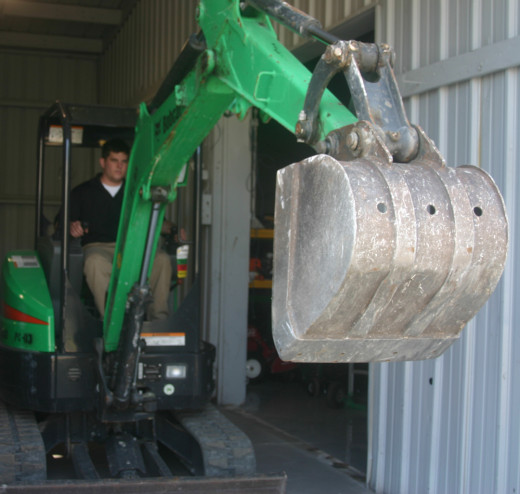
Tip #5: I Get Creative
The Remedy: Start, or Finish, a New Creative Project
Sometimes, I have a lot of energy, but I just can't do the work I'm "supposed" to do, the work on deadline, such as an article, or the work that has piled up, like the mail on my desk (and the floor, and the couch, and the dining table, and the ten thousand emails that take no space at all but still keep us up at night, like the monsters under the bed did when we were children . . .).
This can happen after Step #4, when I come back from my Artists Date or Mental Health Day. I've gotten my energy back, but I just can't focus on work.
Why not?
Because I need to be creative.
Why This Works
You see, my friends, we all have this part of us that artists call the Creative Soul. It's what sent the Beat Generation On the Road back in the 1950s. It's what made Bruce Springsteen Born to Run. We gotta bust out.
For some people, that happens once in a lifetime, and it's called a mid-life crisis. For me, it happens about once a week.
Usually, it means I need to write a short story. Sometimes, I need to create a work of art or go on a photo shoot. Sometimes, I need to start a whole new creative endeavor. Four yeras ago, I started calligraphy. Two years ago, I learned to sing. I think I'll be making movies soon.
I can't not do this.
So, I ask you, when you are really, really stuck in a big way: What is it that you must do to be true to yourself? What is it that you can't not do? Whatever it is: Get creative! Do it!
That one creative act will be like the first ice breaking on the river at the end of winter. The ice-dam will burst, and there will be a torrent of creative energy. You'll get a lot of work done. Then things will settle down, but not get stuck. You'll be back in the flow.
I know this because I've done it. You can do it, too!
How To Do It
The best thing is to start one small creative project and take it all the way through. Write a poem and share it with friends. Write a story and publish it. Make a video and post it on YouTube.
If your dream is bigger than that, say, a novel, not a story, what then? Then start it, and reach a solid place, say, one chapter done. And put a schedule on your calendar to come back to it and work on it until it is done.
Once your creative soul really trusts that you are committed to the work that it knows is your life purpose, it will let you off the hook. It will let you go back and get the work done and pay the bills.
Returning to the Flow
When I started to write this article, I knew I was a bit stuck on writing and meeting my deadline. And I knew that sharing the process of getting creative and getting back to work would dig me out of my hole.
But I had no idea how deep and powerful the journey would be.
I have clarified and released a lifetime of writer's block here. Many years ago, Iiterally spent six months in bed with writer's block. I broke through that and went on to write ten books.
And now, never again. All that old stuckness is gone for good. I can feel it. More than that, I know, from years of experience, that what I have shared with you in this article works for me, and always will. And I'm confident that you can create your own process, your own way of getting creative. It won't look exactly like mine.
But it will work for you.
Synchronicity: The Sign of the Flow
There is a very real mechanism in the world that Jung called Syncronicity. Others call it synergy or happenstance. The truth is that the outer flow of life and the inner flow of the desire of our creative soul are connected. When we make a commitment to be creative, to be true to ourselves, to be in the flow, the world responds very specifically to give us the circumstances we need to make it work.
I don't mean that a million dollars will suddenly fall into your lap without effort. There's a lot of hype around The Secret and The Law of Attraction that just isn't real. But, for those who commit to the Way, the flow of life does respond in small, beautiful ways. And those beautiful, small responses open doors and smooth the way to a very powerful flow of life. Events of synchronicity become a flow called synergy. (For a step-by-step program for making this happen, read The Artists Way.)
I know it's real. How? Because it happens in my life - all the time.
It happened today, as I finished this article.
My business is going through some big changes. They are challenging but underneath them is a sea-change that is allowing me to do much more of my important work, the desire of my Creative Soul.
Outside of my professional money-making work, I am a meditation teacher (33 years of Zen). And I write fiction. Today, as I broke through my creative block to write this article, I went to the grocery store. The man in front of me was buying 8 6-packs of soda, a bag of potato chips, hot soup, and a frozen prepared fish dinner. My mind said, "recently divorced." I didn't ask him, but I did note down the items, because my short-story writing mind said, "This man's shopping cart is a perfect picture of a recent divorce. I can use that in a story.
Well, right behind me in the checkout line, a young woman picked up a magazine on Buddhist meditation and put it back down. Then she had a question that I could answer. This opened the door to me asking her if she wanted to learn to meditate. She said yes. She was also excited to meet my wife, who is a professor at the college where she is studying. We sat down in the cafe and I taught her about the life of the Buddha and the way of Zen.
I left the grocery store completely affirmed in who I am: A meditator, a meditation teacher, and a writer.
I came home, took a nap, woke up at 3am, and finished writing this for you.
Into the Flow Again and Again
We all dream of the big win, the great fix, the perfect love that will bring us to "happily ever after." But life isn't like that. Half of all marriages end in divorce (and are most of the rest really happy?). More than half the people who win big in the lottery end up bankrupt.
Life isn't about the big win.
Life is much better than the big win. Life is the Great Dance.
If you feel stuck, enter the flow. Dance until your feet are sore. Take a rest. Dance again. You will feel stuck again - it's part of learning a greater dance. Enter the flow again.
And again. And again.
Let us dance away the world's pain.

